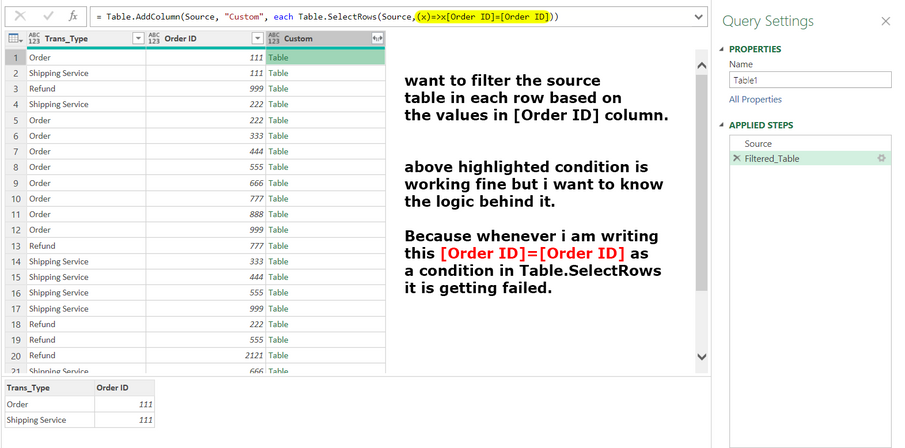Party with Power BI’s own Guy in a Cube
Power BI is turning 10! Tune in for a special live episode on July 24 with behind-the-scenes stories, product evolution highlights, and a sneak peek at what’s in store for the future.
Save the date- Power BI forums
- Get Help with Power BI
- Desktop
- Service
- Report Server
- Power Query
- Mobile Apps
- Developer
- DAX Commands and Tips
- Custom Visuals Development Discussion
- Health and Life Sciences
- Power BI Spanish forums
- Translated Spanish Desktop
- Training and Consulting
- Instructor Led Training
- Dashboard in a Day for Women, by Women
- Galleries
- Data Stories Gallery
- Themes Gallery
- Contests Gallery
- Quick Measures Gallery
- Notebook Gallery
- Translytical Task Flow Gallery
- TMDL Gallery
- R Script Showcase
- Webinars and Video Gallery
- Ideas
- Custom Visuals Ideas (read-only)
- Issues
- Issues
- Events
- Upcoming Events
Enhance your career with this limited time 50% discount on Fabric and Power BI exams. Ends August 31st. Request your voucher.
- Power BI forums
- Forums
- Get Help with Power BI
- Power Query
- Re: Table.SelectRows Custom Column Looping Variabl...
- Subscribe to RSS Feed
- Mark Topic as New
- Mark Topic as Read
- Float this Topic for Current User
- Bookmark
- Subscribe
- Printer Friendly Page
- Mark as New
- Bookmark
- Subscribe
- Mute
- Subscribe to RSS Feed
- Permalink
- Report Inappropriate Content
Table.SelectRows Custom Column Looping Variable
I am new to Power Query.
I got this solution from another forum. I want to understand the logic behind this function.
Funtion used = Table.AddColumn(Source, "Custom", each Table.SelectRows(Source,(x)=>x[Order ID]=[Order ID])) (highlighted part)
The above functions fell into the error when I tweaked it from this condition (x)=>x[Order ID]=[Order ID] to [Order ID]=[Order ID].
Solved! Go to Solution.
- Mark as New
- Bookmark
- Subscribe
- Mute
- Subscribe to RSS Feed
- Permalink
- Report Inappropriate Content
Hi, @asif999 it's all about misleading "each" replacing (_) => and omitting _ later. Makes sense to use this in simple expressions but when you are dealing with iterator inside another iterator ... it's easy to get lost. Rewrite your step as below. Table.AddColumn iterates Source and (w) is a current row of that iteration. But w[Order ID] is another table you are iterating. (x) is a current item (row) of that iteration (over w[Order ID] table)
Table.AddColumn(Source, "Custom", (w) => Table.SelectRows(Source,(x) => x[Order ID]= w[Order ID]))
- Mark as New
- Bookmark
- Subscribe
- Mute
- Subscribe to RSS Feed
- Permalink
- Report Inappropriate Content
Hi, @asif999 it's all about misleading "each" replacing (_) => and omitting _ later. Makes sense to use this in simple expressions but when you are dealing with iterator inside another iterator ... it's easy to get lost. Rewrite your step as below. Table.AddColumn iterates Source and (w) is a current row of that iteration. But w[Order ID] is another table you are iterating. (x) is a current item (row) of that iteration (over w[Order ID] table)
Table.AddColumn(Source, "Custom", (w) => Table.SelectRows(Source,(x) => x[Order ID]= w[Order ID]))
- Mark as New
- Bookmark
- Subscribe
- Mute
- Subscribe to RSS Feed
- Permalink
- Report Inappropriate Content
@asif999 many thanks for accepting my answer as a solution... but I would like to reconsider my explanation.
Table.AddColumns still iterates Source table row by row. "w" is still a variable referring to the current row of iteration. But at any particular row of iteration "w" calls for another iteration function - Table.SelectRows. The last one asks for a table to iterate on - the original Source table - and iteratates row by row with (x), selects those records of Source with [Order ID] = currently iterated row (w[Order ID]). It all looks like Table.Group by [Order ID] but it's not. It must be painfully slow.
- Mark as New
- Bookmark
- Subscribe
- Mute
- Subscribe to RSS Feed
- Permalink
- Report Inappropriate Content
Thanks for the explanation.
Now I got it 100%.
I was doubting the Table.SelectRows' iterator (x). And I was about to ask you the same.
I appreciate you have reconsidered your answer. Thanks once again😊



